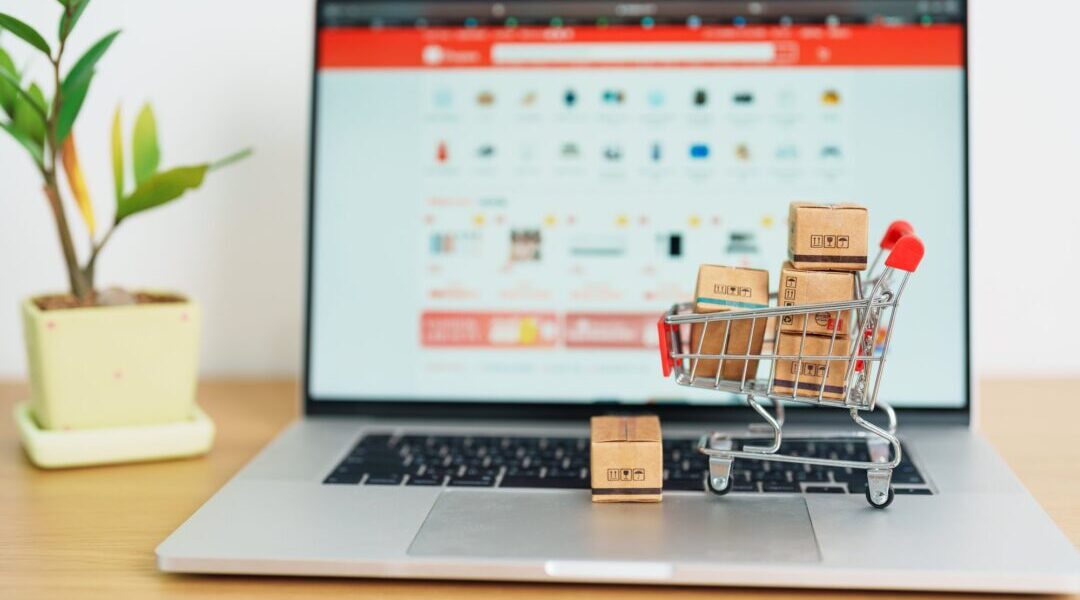Rapid technological advancements have affected all aspects of commerce, including B2B supply chains. Using the latest software and other technological solutions, you can overcome B2B supply chain challenges and boost your business’s efficiency.
You’ll also improve relationships with customers—94% of buyers prefer working with suppliers that frequently evolve their digital capabilities.
To implement digital technology in your supply chain, you must understand what software is available and which is right for your business. As your supply chain undergoes a digital evolution, you should keep an eye on emerging trends to stay current.

The Importance of Digital Evolution in B2B Supply Chains
All aspects of life have become digitized, and businesses have come to expect the same from their suppliers. Research shows 49% of all B2B purchases are made via digital channels. This isn’t hard to understand, as increasing digitization has solved many supply chain challenges. It speeds up the process while reducing the maintenance required on your end.
Manufacturers previously believed B2B customers made small purchases digitally and large purchases face-to-face. But in today’s modern, post-COVID-19 world, businesses are more willing to make large purchases remotely. This makes digitizing your B2B supply chain more urgent than ever.
You want to provide a seamless experience throughout the customer journey. Several ways to solve your supply chain challenges and attract more customers include enabling mobile purchases, integrating augmented reality, and having an intuitive website design. Though this can be a lot of work, you can make the process easier with a digital merchandising tool.
The Impact of Technology on B2B Supply Chain Management
The ever-increasing ubiquity of technology has had a monumental impact on supply chain management. What were once major supply chain challenges have become simple bumps in the road vendors can conquer with the press of a button. This is good, as supply chains have grown more complex.

Various technologies have been implemented to improve the efficiency of supply chains. For example, suppliers can use artificial intelligence (AI) to gain deeper analytical insight than ever.
Robotic automation can save money by reducing the required human labor and minimizing errors made. Many supply chain managers have also embraced the Internet of Things (IoT), which uses connected devices throughout manufacturing to deliver data instantly.
Technology has also had a significant impact on productivity and cost. Naturally, you want your business to generate maximum profits, so you must run an efficient system with as little waste as possible. Use technology to automate processes and reduce the human input needed for routine tasks. As a result, your business can do more at a much lower cost.
The initial investment required to implement new technology may be daunting. But in the long run, the benefits are exponentially greater.
Equally important, digitizing your supply chain gives you access to more information than ever. You need accurate analytics and reliable data at your fingertips to make wise business decisions. This will prevent you from taking unnecessary risks. It also helps you predict incoming supply chain challenges so you can plan accordingly.

The Role of Software in B2B Supply Chain Optimization
Many software options on the market can optimize your B2B supply chain through digital transformation. Understanding the differences between the various supply chain management (SCM) software types will spare you the pains of trial and error.
Transportation Management Software
Many supply chain managers use transportation management software (TMS), which helps you manage logistics and transportation functions. This includes planning routes, tracking shipments, and automating as many processes as possible.
Warehouse Management Software
As the name implies, warehouse management software (WMS) manages inventory in warehouses and optimizes their operations. WMS controls freight on-site, while TMS monitors freight during movement.
Enterprise Resource Planning Software
You could also use enterprise resource planning (ERP) software to tackle supply chain challenges. This software manages day-to-day business operations on a single platform. Typically, TMS and WMS are linked to ERP. This ensures greater accuracy, as data doesn’t need to be entered multiple times. It also reduces the odds of mistakes.

Emerging Trends in the B2B Supply Chain
Watching B2B supply chain trends will help you prepare for future supply chain challenges that may arise. For instance, by 2026, more than 75% of SCM applications will feature advanced analytics, data science, and AI. This isn’t surprising—managers can use AI to gather superior analytics, facilitating better decision-making.
For instance, you likely associate blockchain technology with cryptocurrency, which works well in the supply chain. Simply put, it stores data in a format that can’t be changed or copied. Suppliers have used blockchains to track the origins of goods, determine authenticity, and sustainably prove quality.
Sustainability is a trend you can’t ignore. Consumers have become more conscious of global warming and our industries' effect on the climate. With customers increasingly considering the environmental impact of their decisions, it’s crucial to demonstrate that your business operates in an ecologically sustainable manner.
Modern supply chains are crippled without digital evolution. The use of AI can improve your analytics, while automation boosts efficiency and saves you money. It’s also critical for your B2B customers, as technology lets them receive instant updates on orders and make purchases remotely.
Overcome Supply Chain Challenges with Digital Technology
The demand for technologically advanced supply chains will only grow. So, to stay ahead of your competition, you must be prepared. Smart Merchandiser can give you the head start you need. Through its inventory management system, you can easily organize, manage, and optimize your inventory levels.
Make shopping easier for clients by including visual trigger alerts that signal when inventory is low. You can also see how much inventory is available in each color and highlight those products.
Automated business rules enable you to combine multiple rules around conversion rates, sales, inventory, and more, ensuring precise online merchandising. You also have access to useful analytics such as page views, conversion rates, and sales revenue through unobtrusive data overlays accessible right on product images.
Contact Smart Merchandiser to overcome your supply chain challenges. You’ll receive an overview, product demo, and quote within 48 hours.




